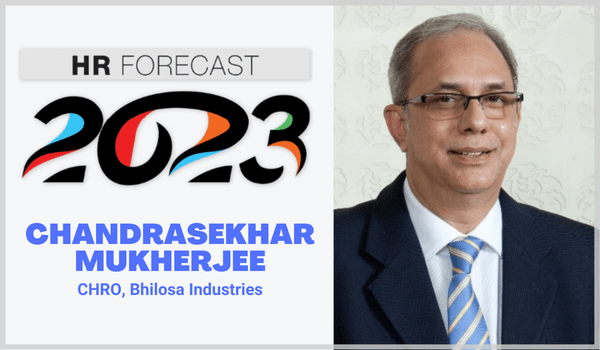2022 was a volatile year for HR & workforce
The Year 2022 was extremely volatile due to the after effects of the first two waves of Covid, the third wave of Covid in the beginning of the year, the war in Ukraine and the effects of these on the economy. An environment of uncertainty created a huge amount of stress on the entire ecosystem, i.e. country, corporates and individuals across the board, which led to the Great Resignation and layoffs later in the year.
2023: Will it be a turmoil again or peace?
The year 2023 will be a challenging year for HR. Being a bridge between an ‘employee’ and ‘employer’, it will have to balance expectations of both the stakeholders, to facilitate a ‘Great Workplace’. The employer will expect higher productivity to offset margins hit to the bottom line due to the prevailing economic conditions whereas an employee would be looking at wellbeing and work life balance.
The key focus areas for HR would be:
• Employee health & wellbeing, which would include the mental health aspect
• Skill based hiring, experience having an edge over qualification
• Hybrid learning including metaverse and gamification in addition to the normal learning tools.
• ESG reporting to be a critical aspect of performance & potential evaluation of an employee
• HR/corporate to accept hybrid/ flexibility working (Future of Work) as the new normal
• Tackle burnouts among HR professionals, due to the complex nature of work and expectations from all stakeholders under a very stressful and uncertain environment.
• Refocus on
– Communication
– Customer service
– Leadership
– Collaboration
– Personal learning & mastery
– Achievement focus
Difference in pay due to performance & potential cannot be construed as pay disparity or dearth of transparency
Balance between rising inflation and changing employee expectations
Nudge the organisation to be driven based on principles and not be fixated with following policies and employees performance/potential being judged based on the outcomes with an emphasis on ‘how’ the outcomes have been achieved, so that an appropriate organisation culture is built.
Pay transparency or staying discreet?
This is ‘work in progress’, we have moved forward over the years and should be there sooner than later. Employees are aware of the compensation philosophy of the organisations, including benchmarked percentile to the market and competitor basket.
There is pay parity among gender for the same role/ job grade, etc. Difference in pay due to performance and potential cannot be construed as pay disparity or dearth of transparency. The actual issue lies in the transparency of the evaluation process and reducing the ‘halo effect’, (enhancing objectivity) and the lack of continuous communication with employees on performance standards/expectations including performance coaching and feedback, which results in salary increases/promotions/pay disparity
ESG bringing CHRO closer to the CEO
It is the role of HR to support the CEO to drive the culture of the organisation with the collaborative support of the leadership team. The ‘how’ part of the evaluation process, which drives the culture of the organisation will help to achieve the ESG goals. The ESG goals significantly contribute to enhancing the valuation of the company and become an ‘Employer of Choice’; hence HR will play a critical role in the achievement of the ESG goals.
33 leaders predict the upcoming trends for 2023. To find out more click here.



